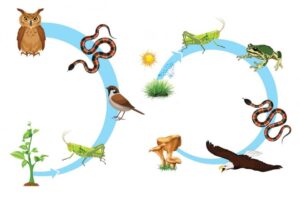
The Impact of Human Activities on Flora and Fauna
Human activities have had a significant impact on the natural world, particularly on the flora and fauna that inhabit it. As we continue to develop and expand our societies, the consequences of our actions on the environment become more apparent. It is crucial to understand the effects of human activities on flora and fauna to ensure the preservation of biodiversity and the sustainability of our ecosystems.
Loss of Habitat
One of the most significant impacts of human activities on flora and fauna is the loss of habitat. As we clear land for agriculture, urbanization, and infrastructure development, we destroy the natural habitats of many plant and animal species. This loss of habitat disrupts ecosystems and forces species to adapt or face extinction.
Deforestation, for example, not only removes trees but also destroys the intricate network of plants, animals, and microorganisms that depend on them. This disruption can lead to a loss of biodiversity and the collapse of entire ecosystems. Similarly, the conversion of natural grasslands and wetlands into agricultural land or residential areas can have devastating consequences for the species that rely on these habitats.
Pollution
Human activities also contribute to pollution, which has detrimental effects on flora and fauna. Pollution can take many forms, such as air pollution from industrial emissions, water pollution from chemical runoff, and noise pollution from urban areas.
Air pollution, for instance, can harm plant life by damaging their leaves, reducing photosynthesis, and inhibiting their growth. It can also affect the reproductive systems of animals, leading to a decline in their populations. Water pollution, on the other hand, can contaminate aquatic ecosystems, making them uninhabitable for many species of fish and other aquatic organisms.
Overexploitation
Another impact of human activities on flora and fauna is overexploitation. The unsustainable harvesting of plant and animal resources for food, medicine, and other purposes can lead to the depletion of populations and even extinction.
Overfishing, for example, has caused a decline in fish populations worldwide. The use of destructive fishing practices, such as bottom trawling, has not only resulted in the loss of target species but also in the destruction of coral reefs and other marine habitats. Similarly, the illegal trade in wildlife, fueled by demand for exotic pets, animal products, and traditional medicines, has pushed many species to the brink of extinction.
Climate Change
Climate change, largely driven by human activities, is also having a profound impact on flora and fauna. Rising temperatures, changing rainfall patterns, and more frequent extreme weather events are altering ecosystems and disrupting the natural balance of species.
Many plant and animal species are struggling to adapt to these rapid changes, leading to shifts in their distribution and potential extinction. For example, coral reefs are highly vulnerable to the warming and acidification of the oceans, which can result in coral bleaching and the loss of vital habitats for countless marine species.
Conservation Efforts
Recognizing the importance of preserving biodiversity and protecting flora and fauna, conservation efforts have been implemented worldwide. These efforts aim to mitigate the impacts of human activities and promote the sustainable use of natural resources.
Protected areas, such as national parks and wildlife sanctuaries, play a crucial role in safeguarding habitats and providing refuge for endangered species. Conservation organizations and governments are also working together to enforce regulations against illegal wildlife trade and promote sustainable practices in industries such as fishing and logging.
Education and awareness are also vital in ensuring the long-term conservation of flora and fauna. By educating the public about the importance of biodiversity and the consequences of our actions, we can foster a sense of responsibility and encourage sustainable behaviors.
Conclusion
Human activities have undoubtedly had a significant impact on flora and fauna. Loss of habitat, pollution, overexploitation, and climate change are just a few examples of the challenges faced by the natural world. However, through conservation efforts and a collective commitment to sustainability, we can mitigate these impacts and ensure the preservation of our planet’s biodiversity for future generations.

